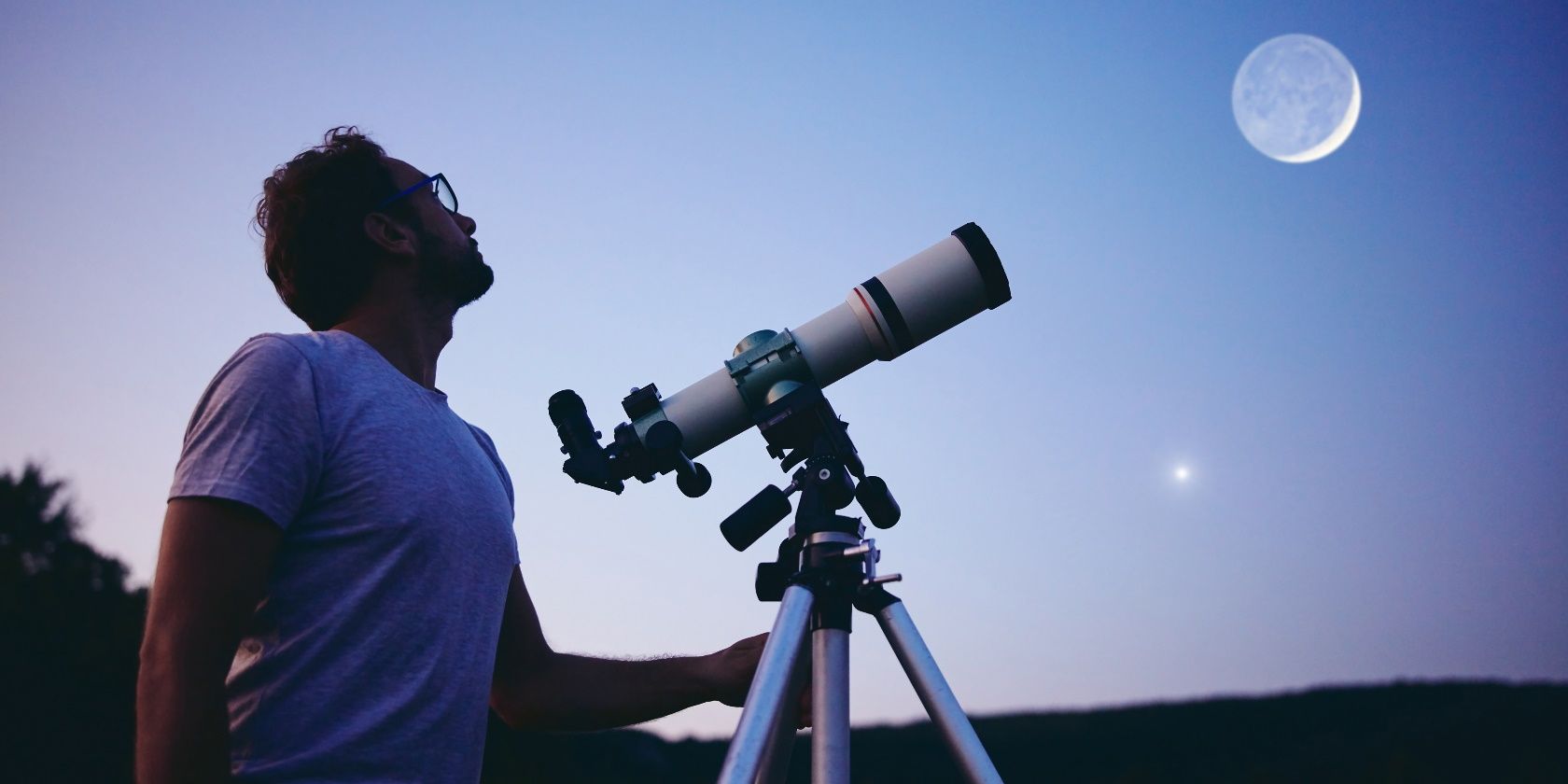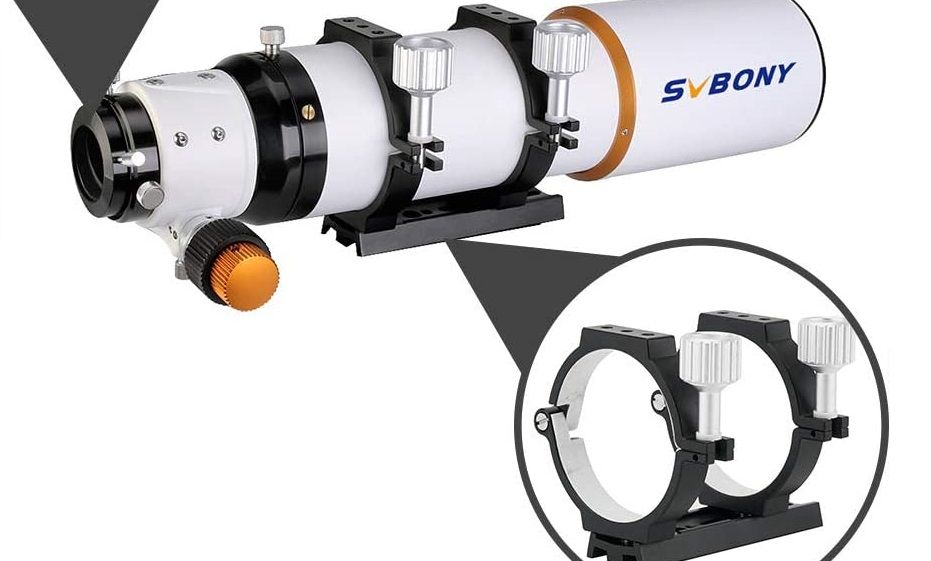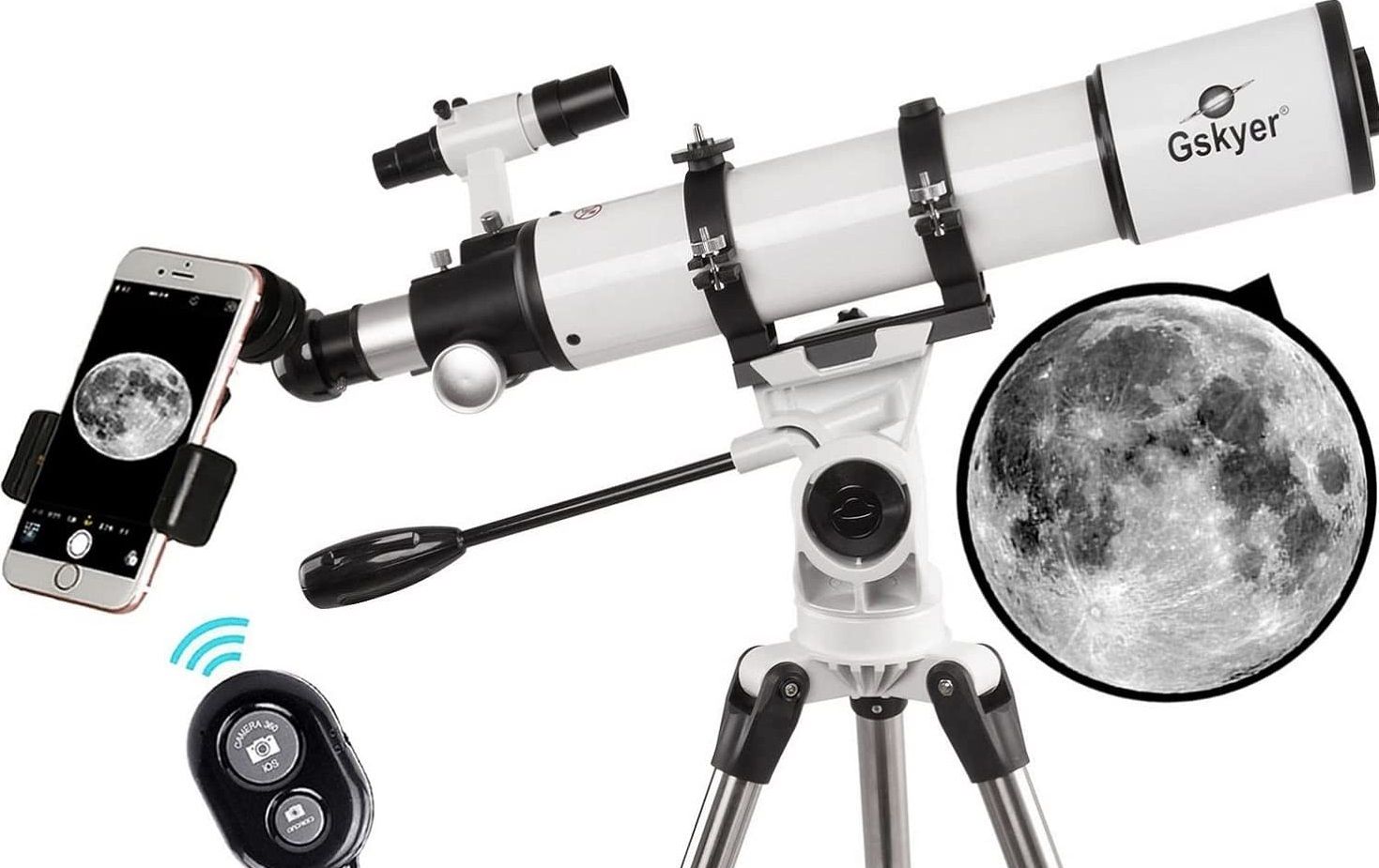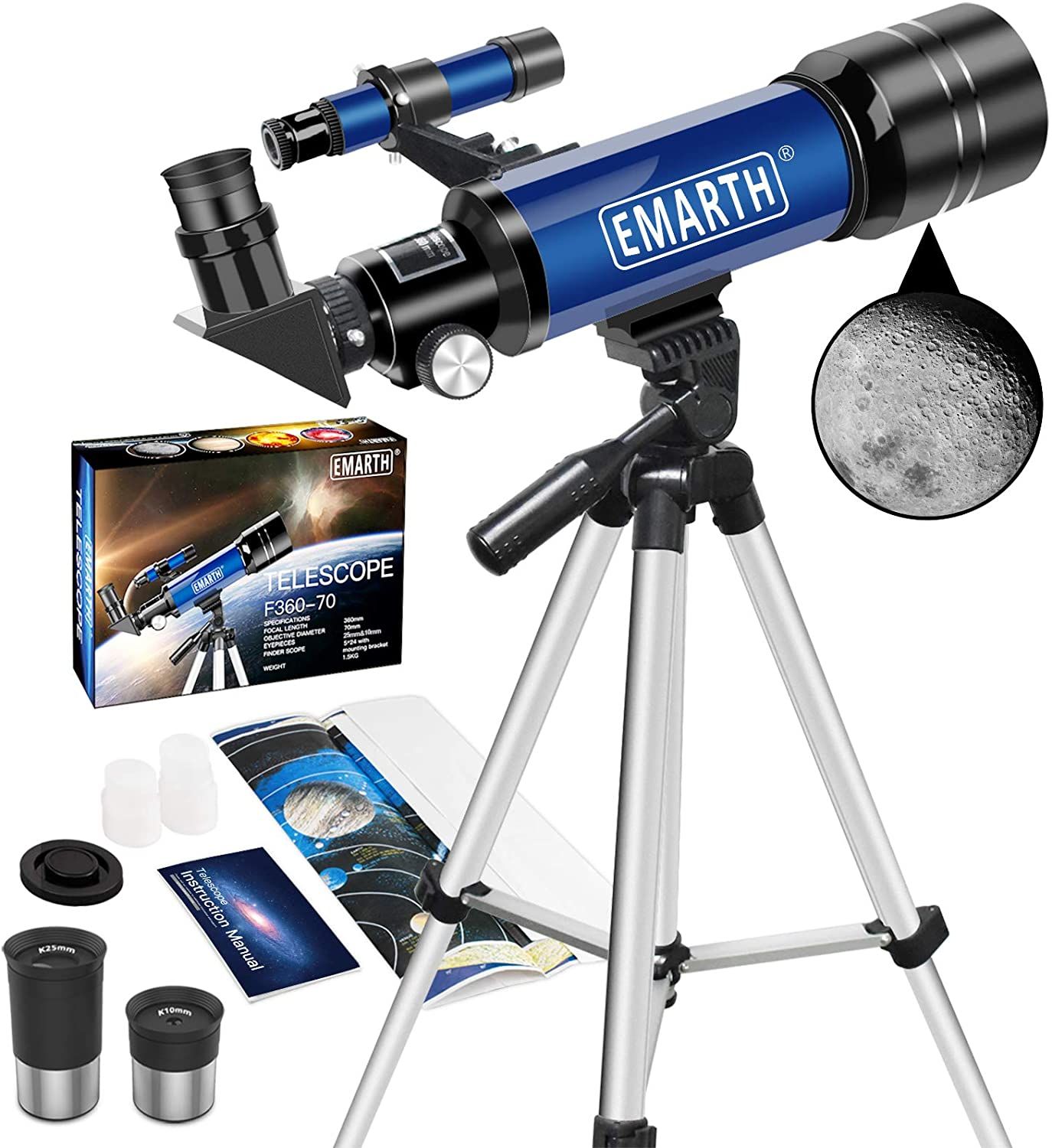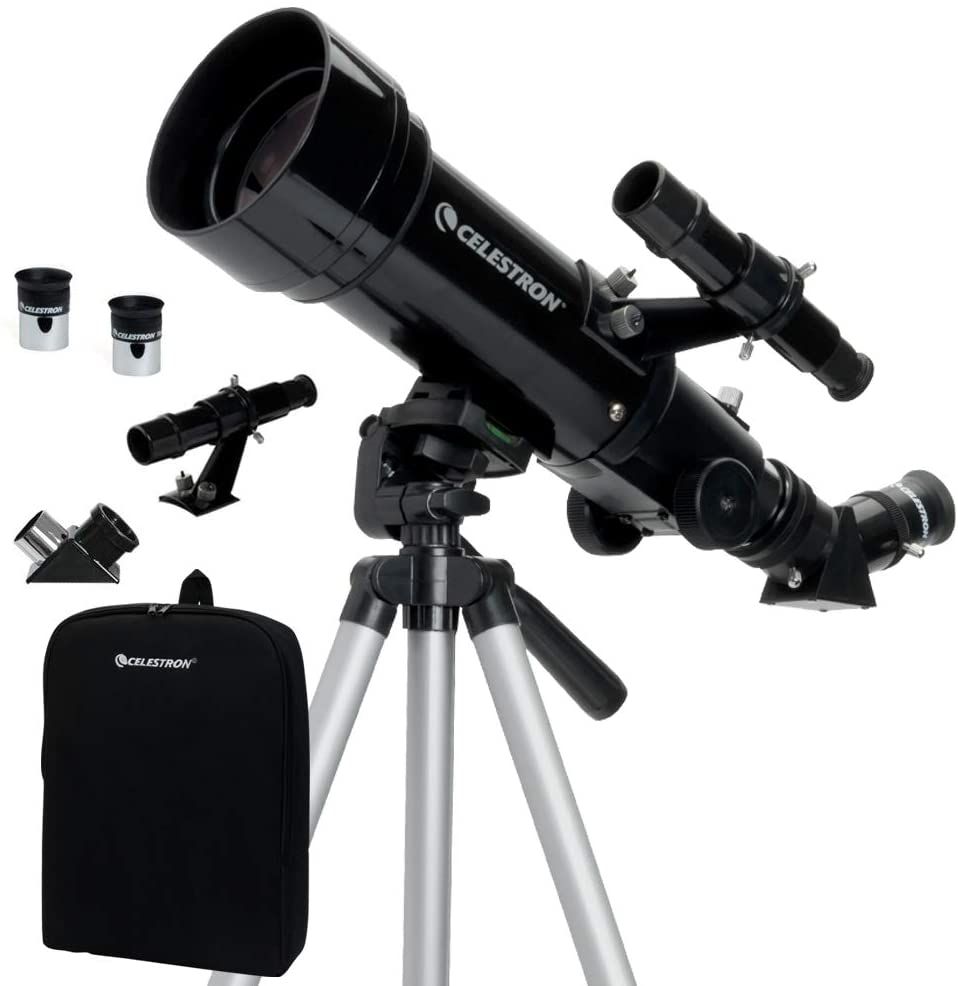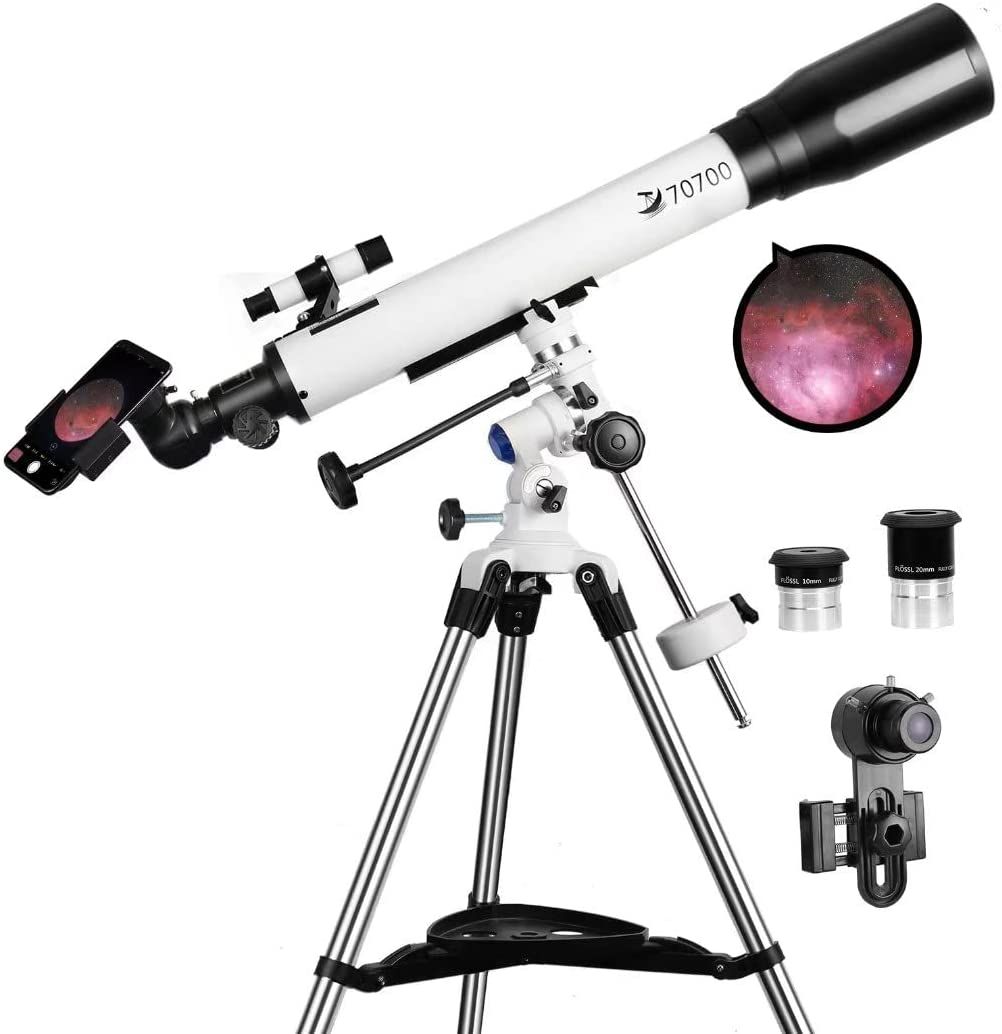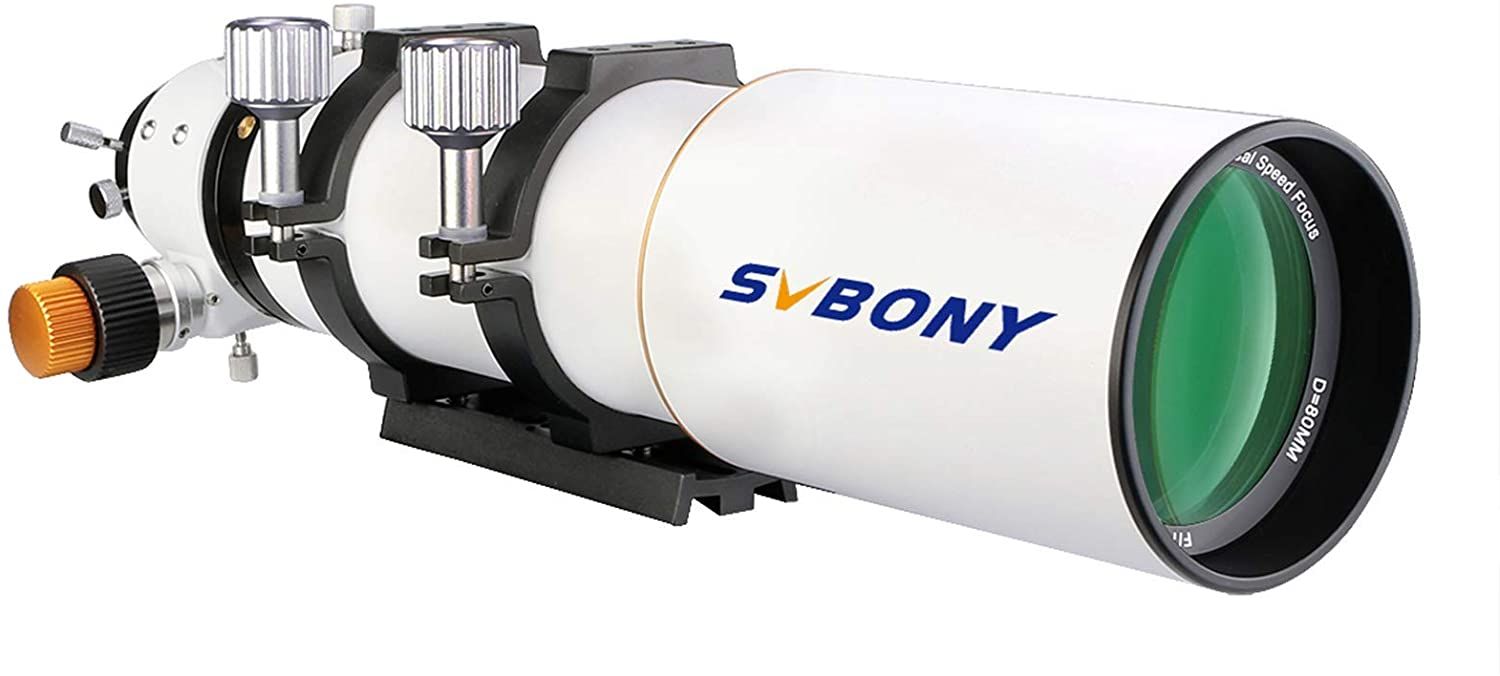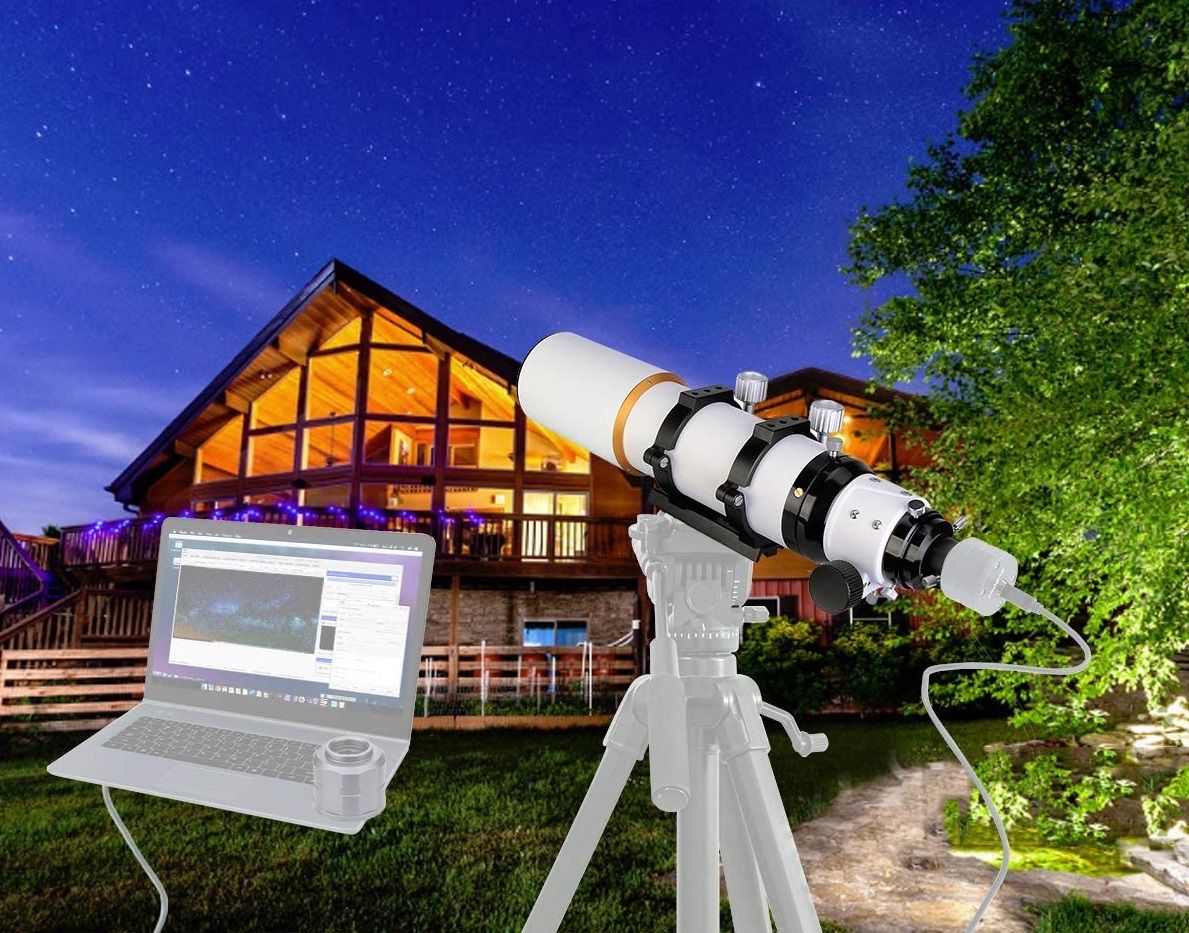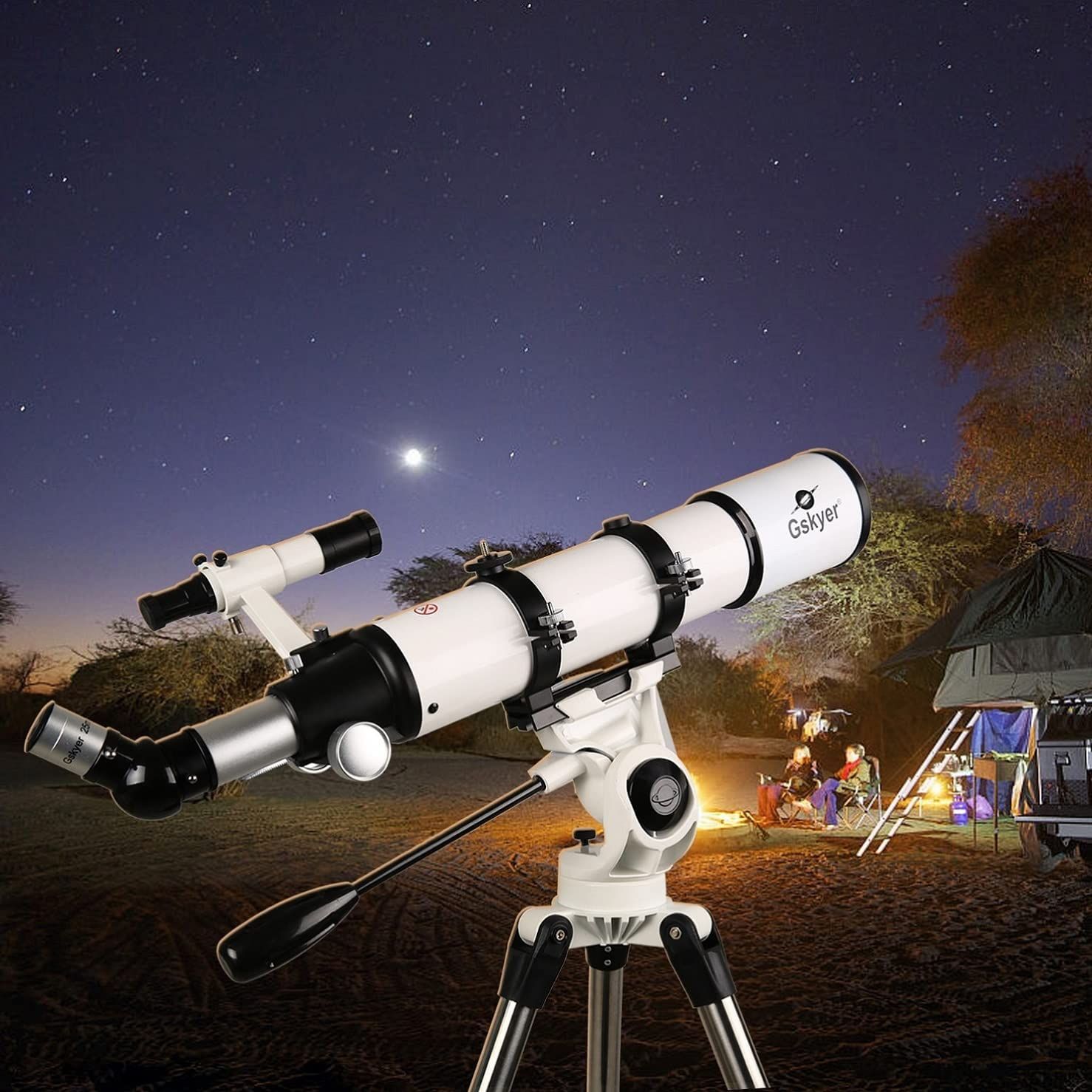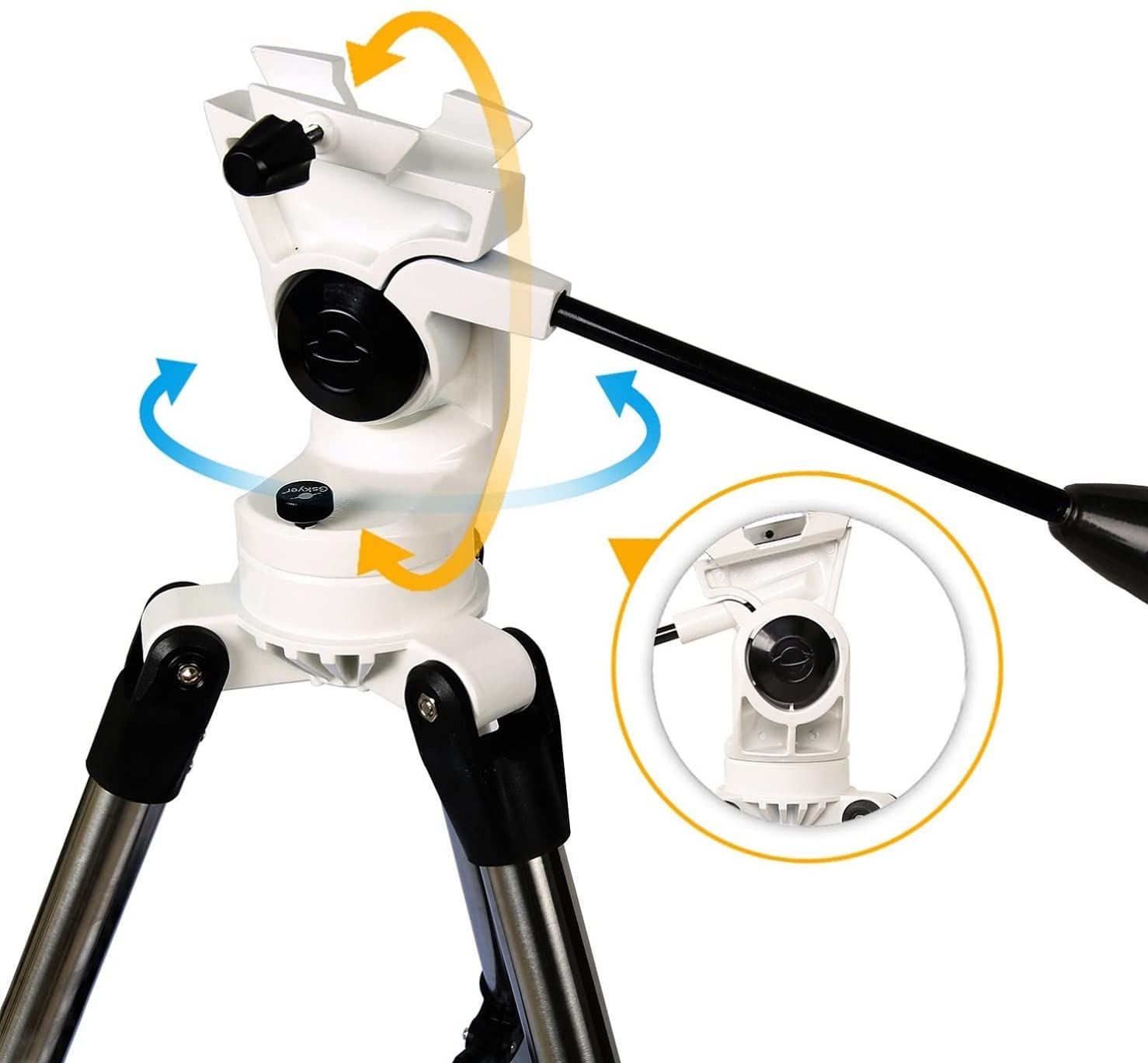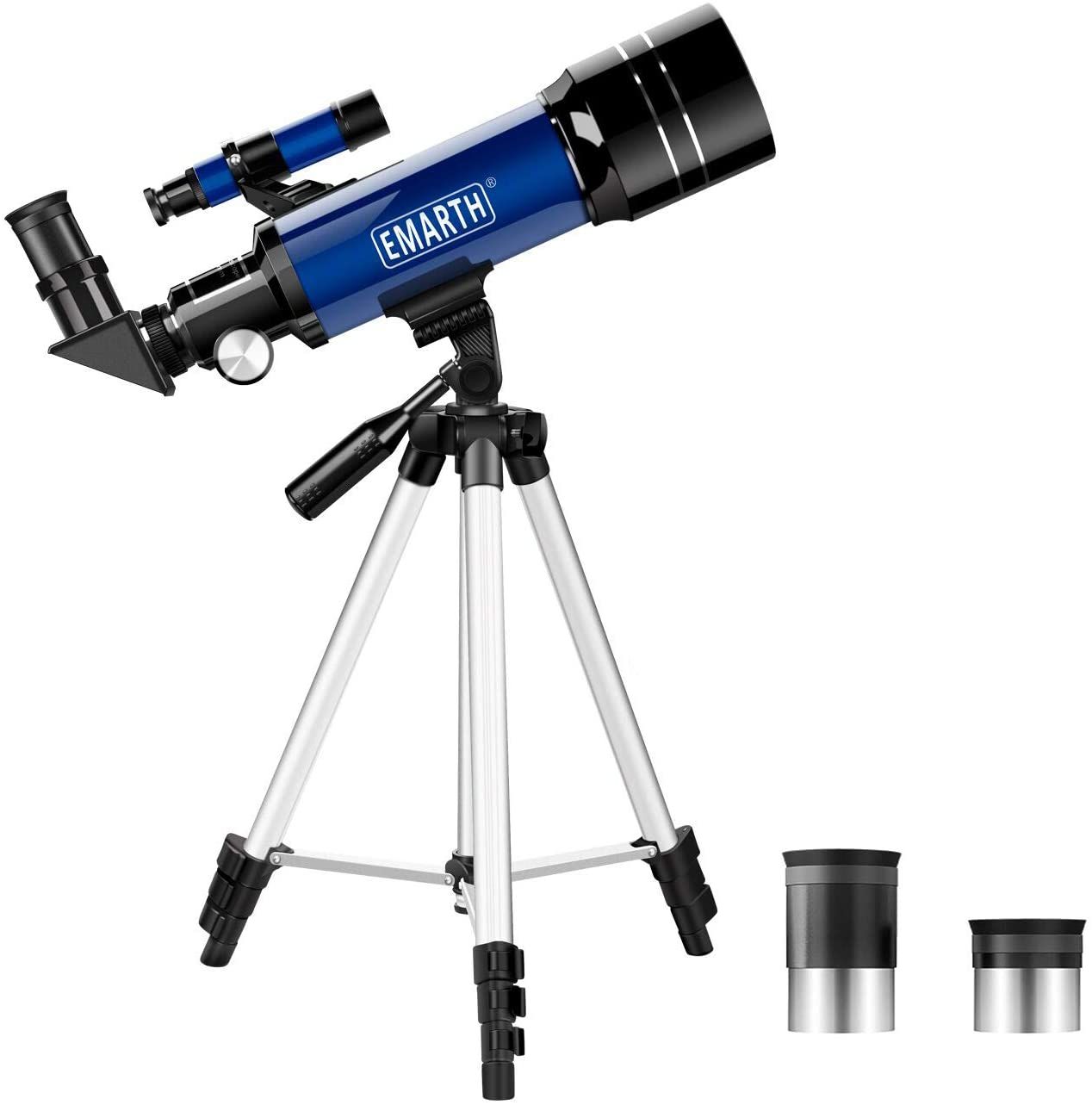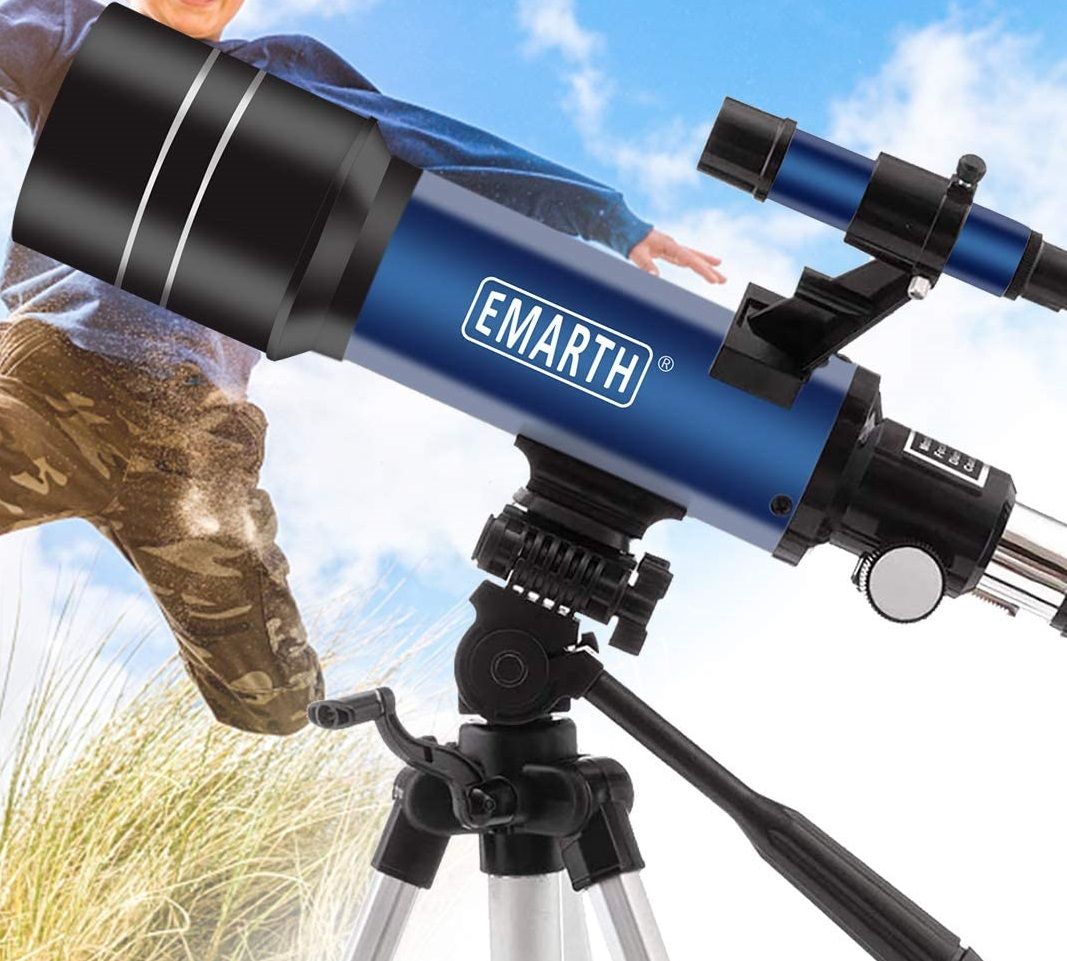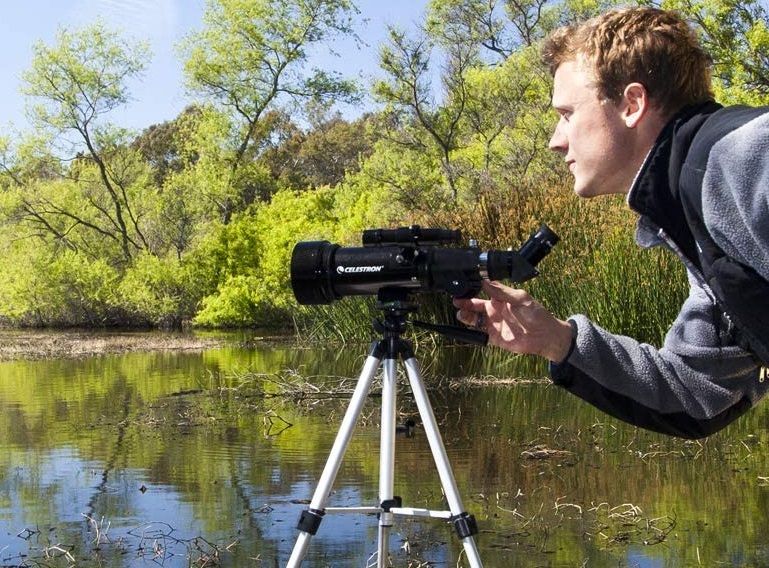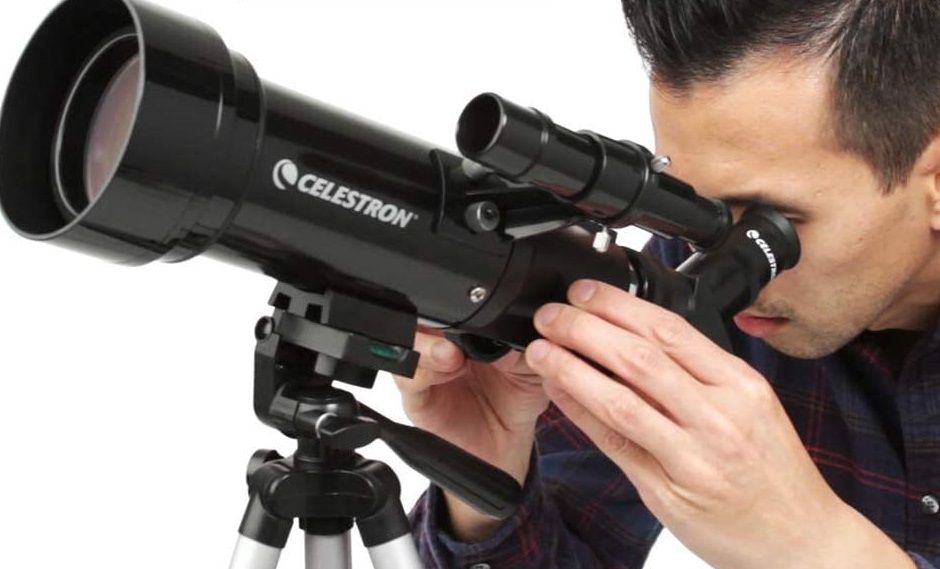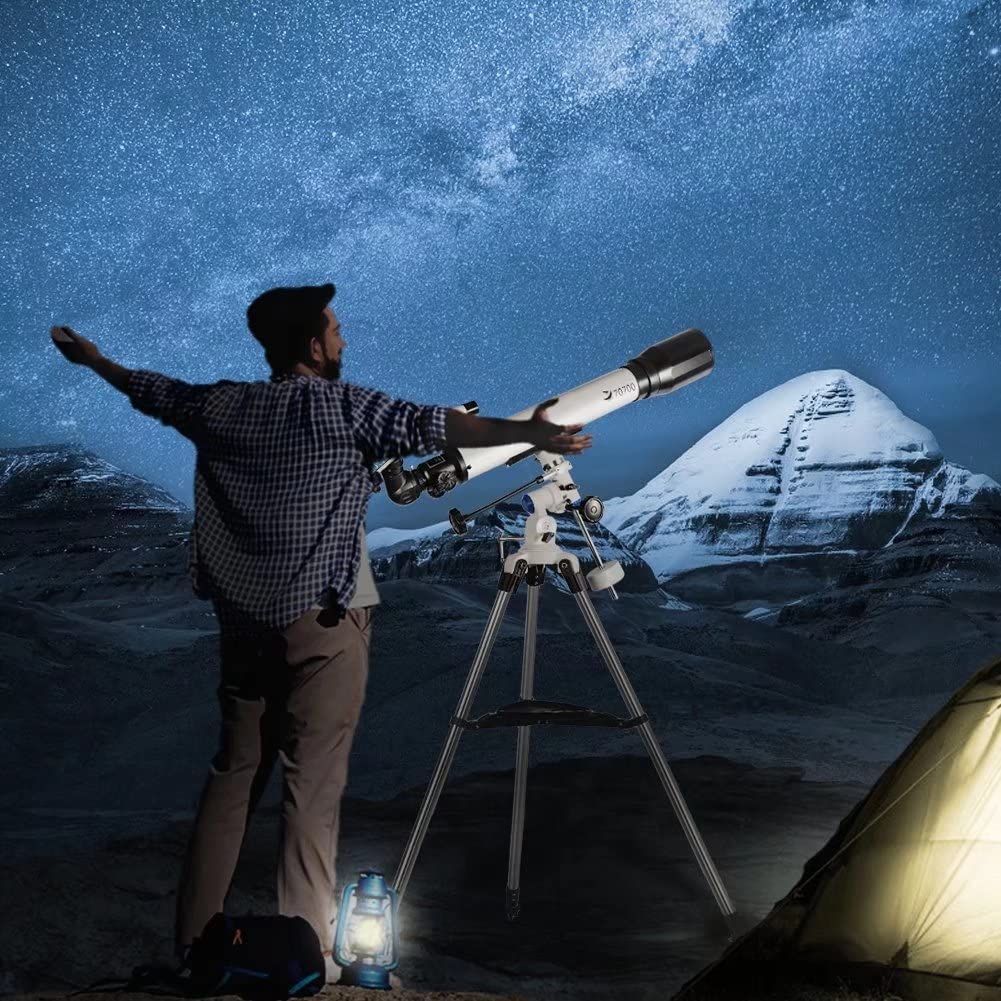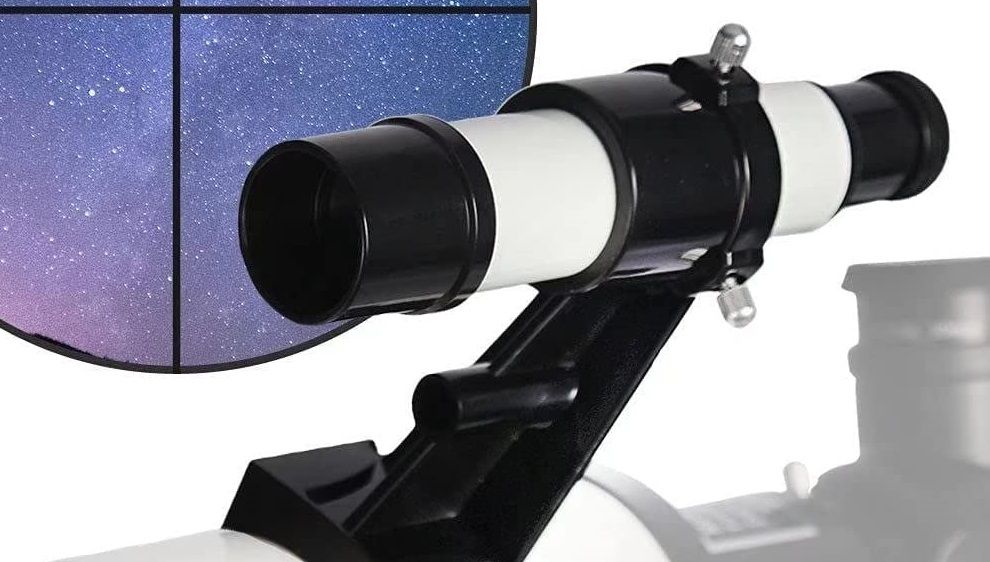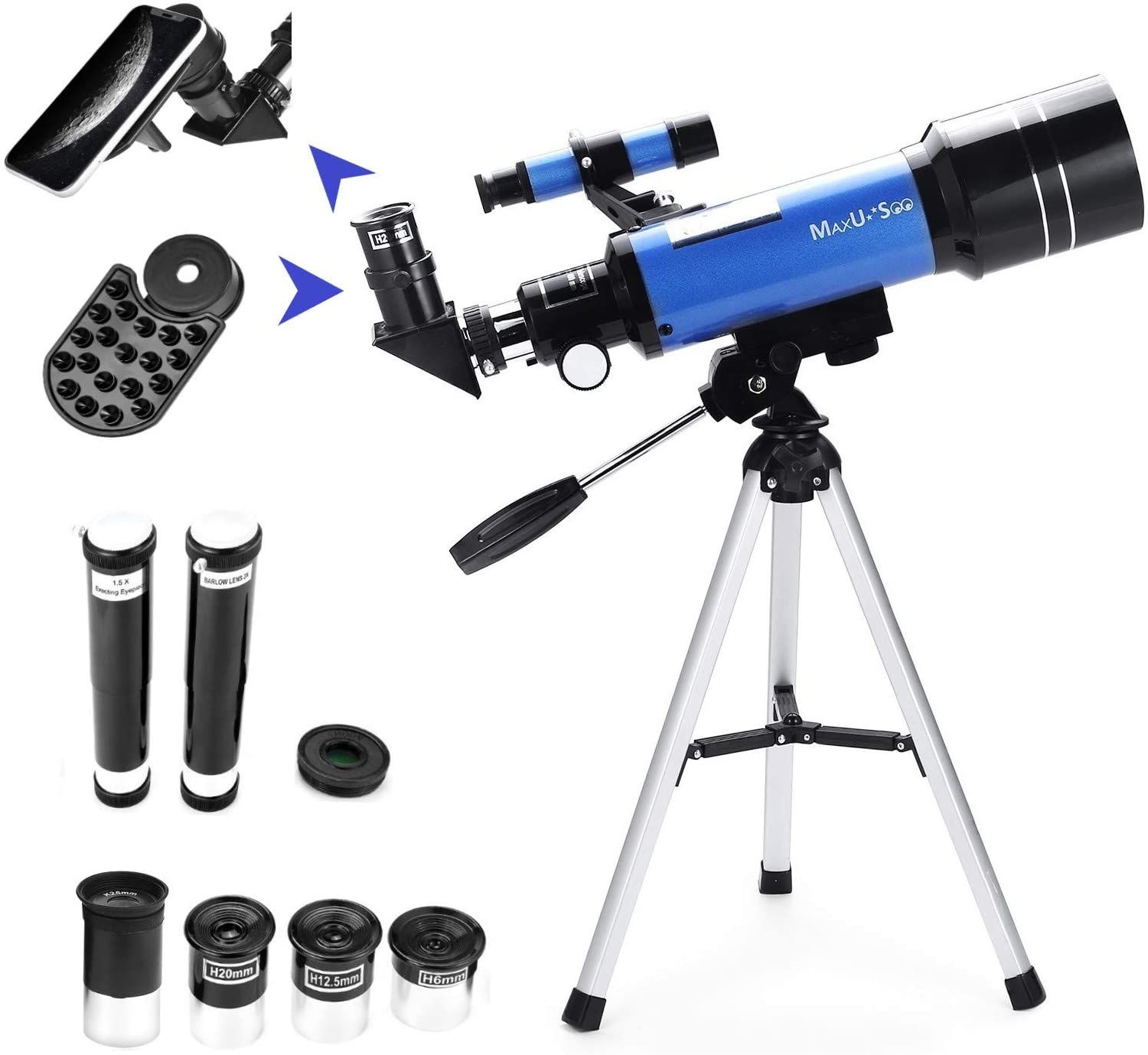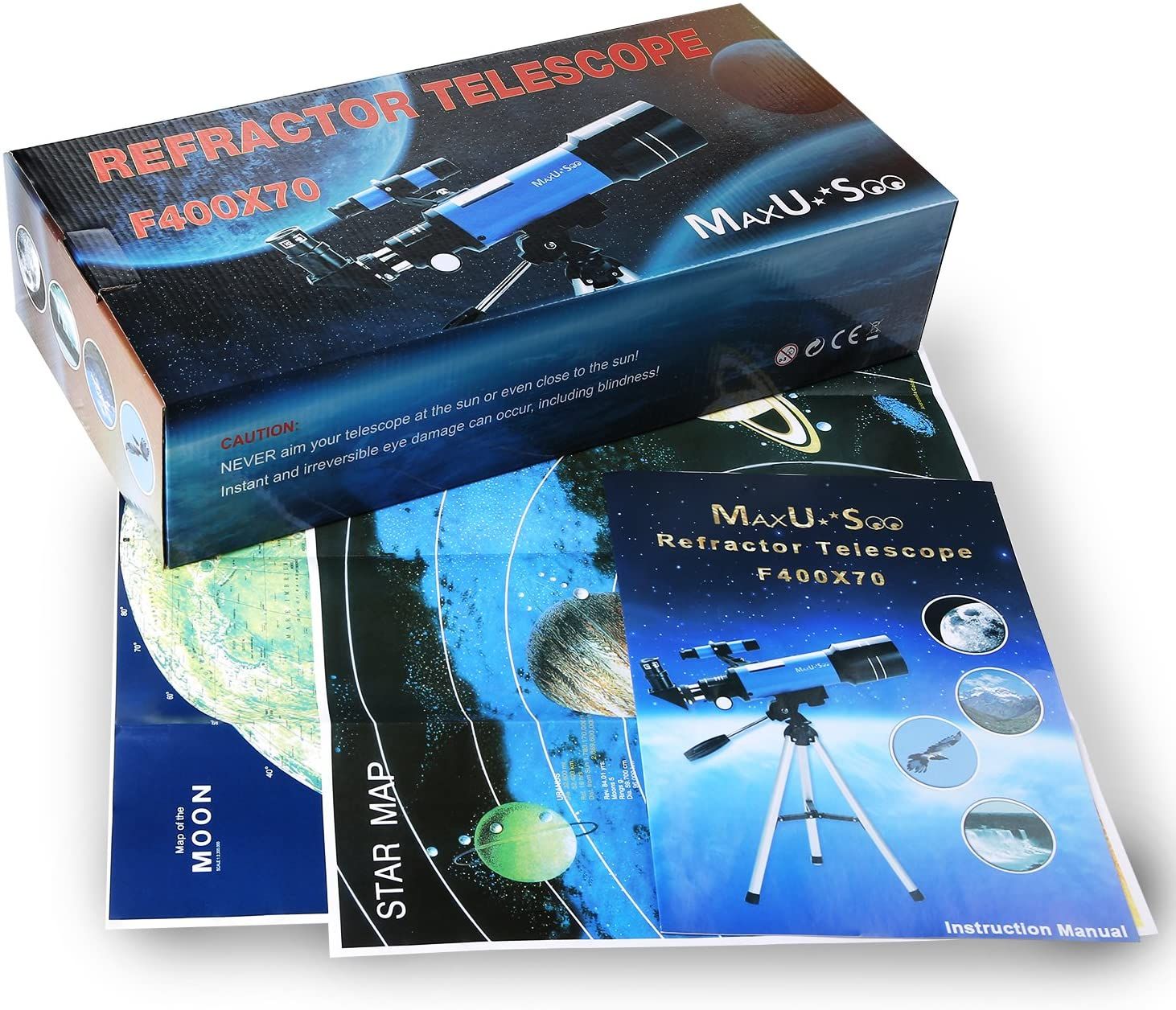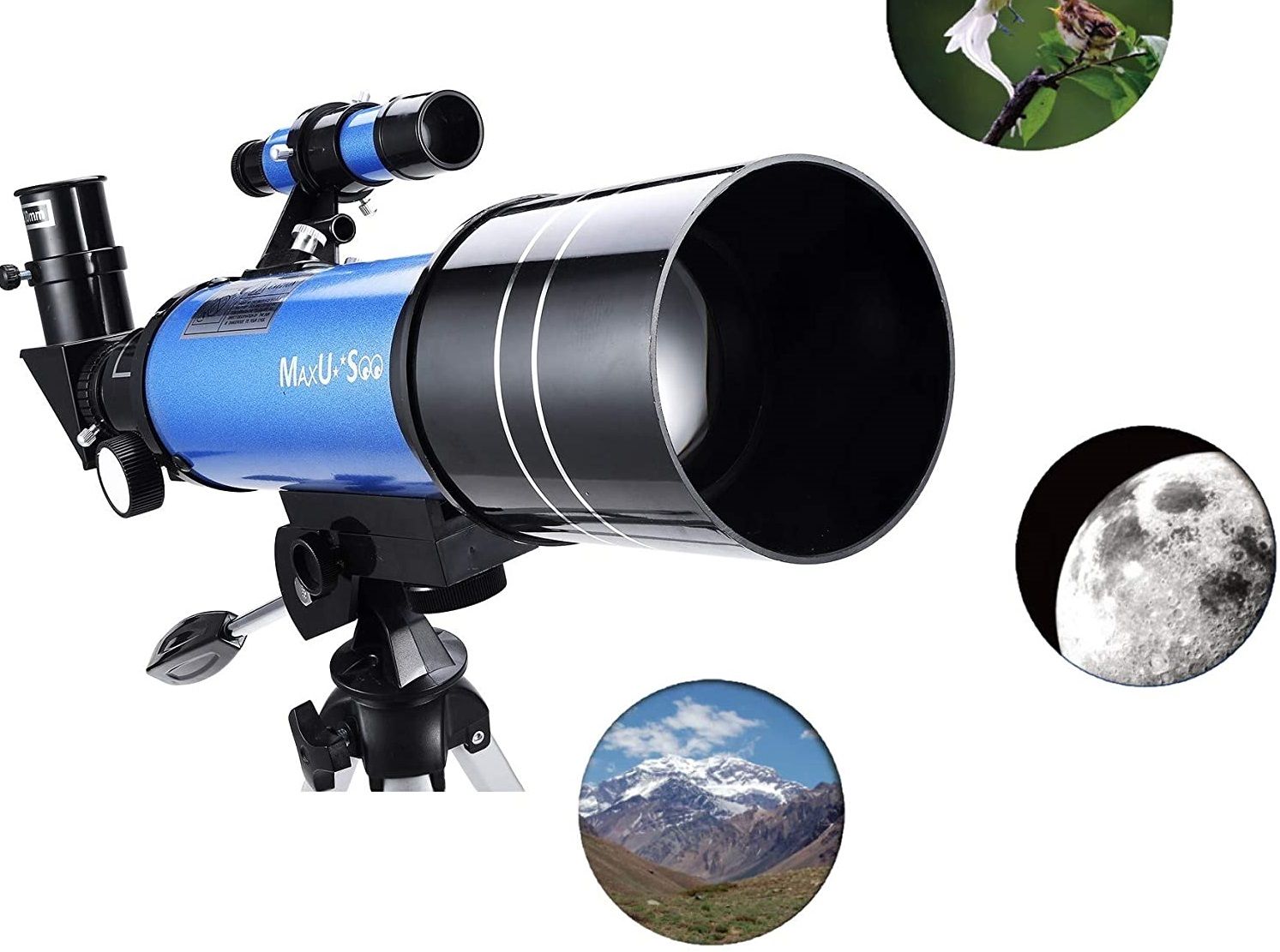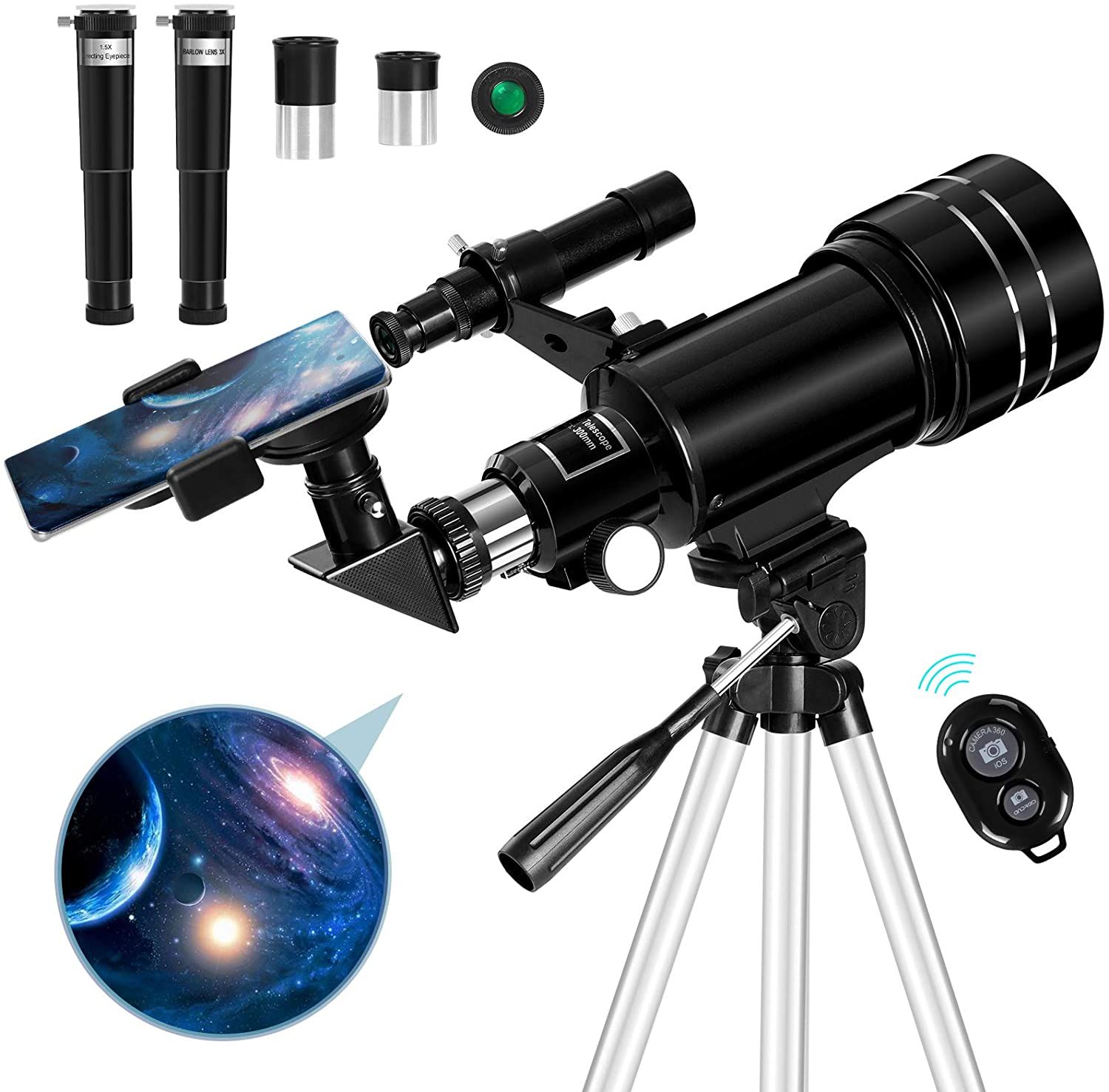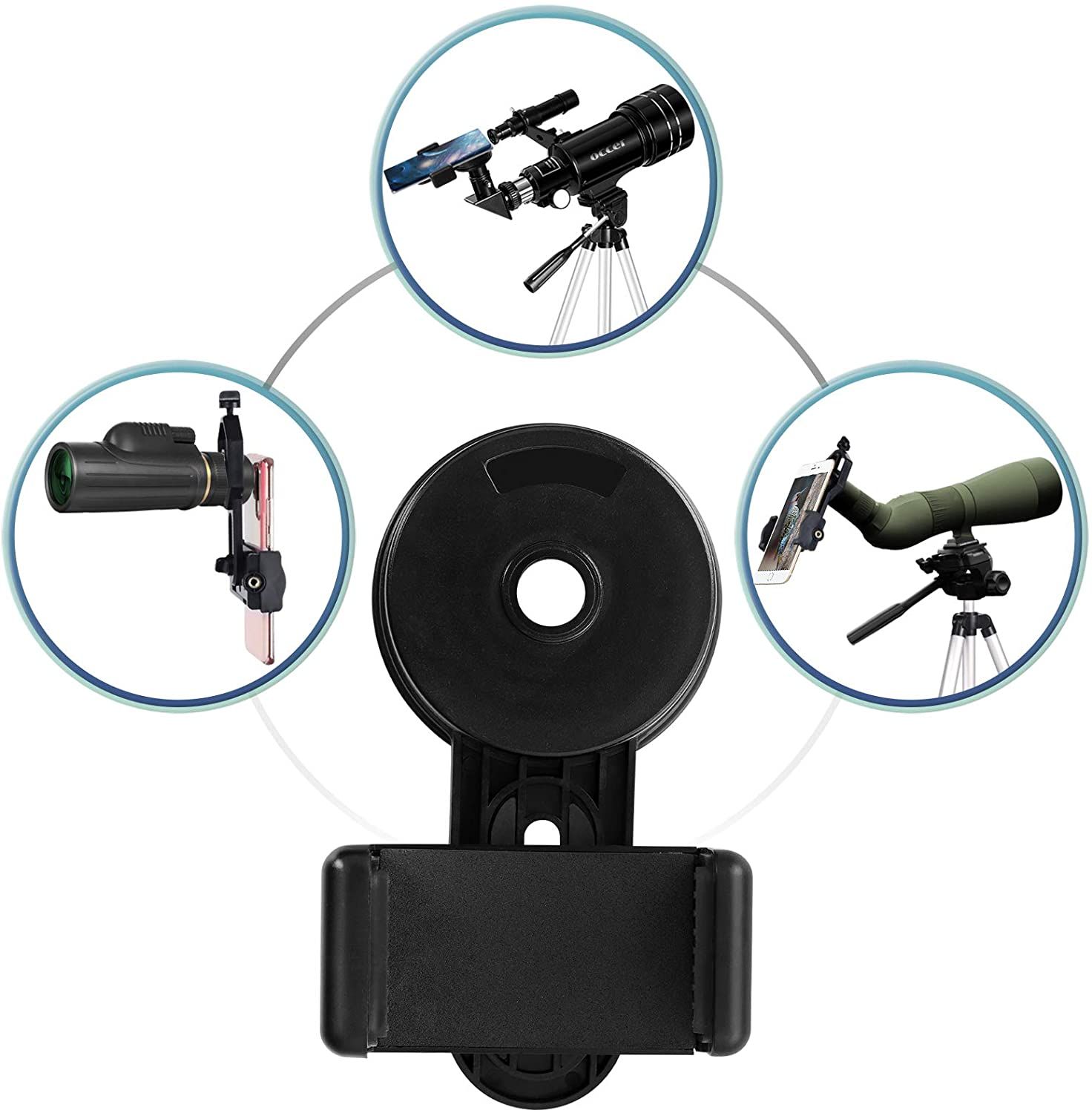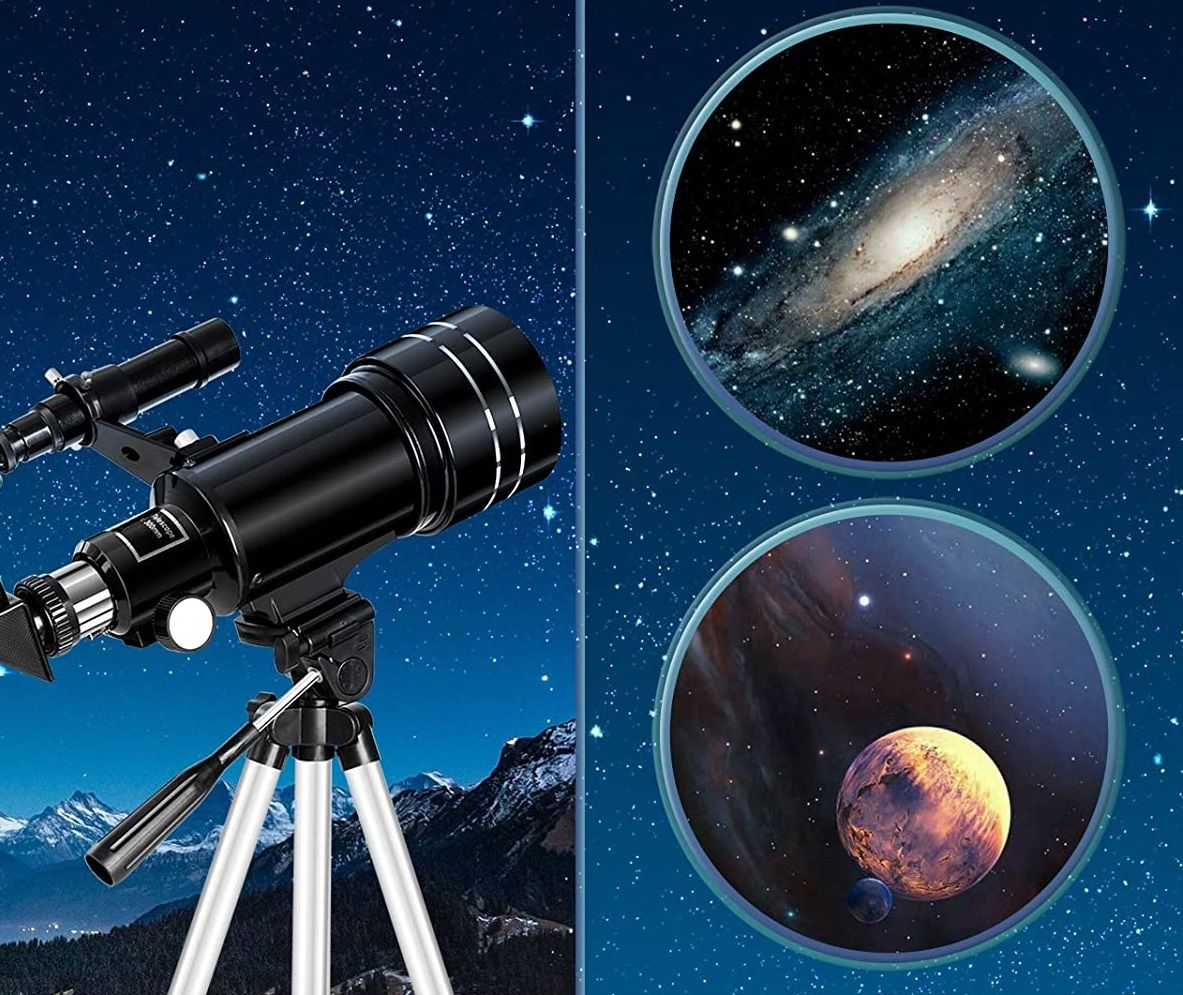Telescopes are tools that astronomers use to bring isolated celestial bodies to almost within a touching distance. They are available in four types, including reflectors, refractors, compound, and catadioptric, each with a different lens setup.
Most telescopes are easy to set up, while others include smartphone adapters, so you can record what you see. However, finding the best telescope can be challenging, especially if you’re a beginner.
Here are the best telescopes suitable for both veterans and novices.
Defined by its impressive build quality, the SVBONY SV503 telescope makes an ideal choice for astrophotographers who want to achieve bright and expansive views. It comes with an SV503 ED doublet lens that eliminates reflections while minimizing light loss, enabling you to view detailed objects. The telescope boasts a 560mm focal length and 80mm aperture, allowing sufficient light to pass through.
You’ll see wispy nebulas, spectacular star clusters, expansive galaxies, and explicit objects in the solar system, making it the best telescope for astrophotography. The excellent craftsmanship proves that the SVBONY SV503 telescope is designed to be long-standing. Almost the entire body is crafted from metal and has a white-powder coating with gold accents, making it attractive.
The focus rotates up to 360 degrees while the focus tube extends up to 90mm, allowing you to find the ideal framing for imaging astronomical objects. The focuser includes a two-inch to 1.25-inch adapter, enabling you to use the telescope with your 1.25-inch accessories.
- Fully multi-coated ED optics
- Fine-grained finishing
- Dual-speed rack
- Pinion focuser
- Brand: Gskyer
- Color: White
- Material: Aluminum, stainless steel
- Weight: 17.89lbs
- Mount: Altazimuth
- Aperture: 90mm
- Focal Length: 600mm
- Dimensions: 38 x 12 x 8 inches
- RGB Lighting: No
- Programmable Buttons: No
- Multi-Device Pairing: No
- Extendable dew shield
- Substantial build quality
- Excellently detailed images
- Achieves a 1.5 arc-second resolution
- Lacks a finder mount
Anyone looking for an inexpensive and beginner-friendly telescope will love the Gskyer AZ90600. It’s surprisingly powerful for its price, making it ideal for observing the moon’s surface, stars, and rings of Saturn with excellent clarity. Setting up this telescope takes around ten minutes, without posing any challenges, even for beginners.
The aluminum alloy optical tube is highly durable, plus the included stainless steel tripod is sturdy enough to hold the entire unit in place. You can also adjust it to your preferred length to achieve the best viewing position. The altazimuth mount has a simplistic mechanical design to allow easy side-to-side and horizontal movements.
The anti-reflection blue-film components eliminate internal reflection that may distort images, enhancing the clarity and quality of heavenly bodies. The mounting knob and safety screw on the dovetail bracket lets you attach the mount in no time for ease of use and focus. You get 25mm, 10mm, and 5mm lenses for increasing and decreasing power on your telescope.
- Three replaceable eyepieces
- One 3x Barlow lens
- Fully coated glass lens
- Stainless steel tripod
- Brand: Gskyer
- Color: White
- Material: Aluminum, stainless steel
- Weight: 17.89lbs
- Mount: Altazimuth
- Aperture: 90mm
- Focal Length: 600mm
- Dimensions: 38 x 12 x 8 inches
- RGB Lighting: No
- Programmable Buttons: No
- Multi-Device Pairing: No
- Great for beginners
- Decent optics
- High magnification
- Some cheap accessories
Portable, easy to use, and durable, the Emarth is one of the best telescopes for kids. Observing bright and high-quality celestial and terrestrial objects is smooth with the all-coated glass optical elements. They allow kids to view clear planetary images while being easy on the eyes. The closed optics also hold up well in light rain.
Onboard are interchangeable eyepieces that support a 3x Barlow lens to increase magnification. Setting up the telescope is straightforward as it requires no special tools. The entire unit is designed with portability in mind, making it suitable for on-the-go stargazers. Its aluminum tabletop tripod retracts downwards to a convenient size for easy transportation with the included case.
The mount supports an altazimuth movement, making it easy for kids to make side-to-side motions when searching across the sky or landscape. There’s a boatload of accessories, including a finder scope, erect image diagonal, tripod, and more, which is thoughtful for a budget-level package.
- 5x24 finder scope
- High-quality optics
- No tool setup
- Fully coated lens
- Brand: Emarth
- Color: Blue and black
- Material: Aluminum
- Weight: 2.47lbs
- Mount: Altazimuth
- Aperture: 70mm
- Focal Length: 360mm
- Dimensions: 18.07 x 8.74 x 4.41 inches
- RGB Lighting: No
- Programmable Buttons: No
- Multi-Device Pairing: No
- Compact and lightweight
- Great price-performance ratio
- Easy to set up
- High-quality construction
- Tripod becomes flimsy at full length
4. Celestron 2135
Specially designed for on-the-go users, the Celestron 2135 packs incredible features that make observing planetary objects a breeze. The adjustable tripod legs let you customize the telescope’s height for easy placement and viewing. The altazimuth mount provides up-and-down and back-and-forth motion, giving you an easy time tracking celestial bodies.
You can download the Starry Night Software to learn more about stellar objects and the night sky or plan your next observing session. Setting and using the Celestron 2135 is easy with the full-color and well-detailed instructions, making it one of the best telescopes for beginners. The two 20mm and 10mm eyepieces provide different magnifications when viewing comets, stars, planets, and other objects.
There’s a custom backpack that holds the telescope and its accessories snugly for maximum protection when on the move. The unit weighs 3.3 pounds, so you can carry it and other necessities without them weighing you down.
- Includes 20mm and 10mm eyepieces
- Coated glass optics
- Adjustable tripod
- Brand: Celestron
- Color: Black
- Material: Steel
- Weight: 3.3lbs
- Mount: Altazimuth
- Aperture: 70mm
- Focal Length: 400mm
- Dimensions: 18 x 7 x 14 inches
- RGB Lighting: No
- Programmable Buttons: No
- Multi-Device Pairing: No
- Ideal for beginners
- Designed with portability in mind
- Includes all basic components
- Useful travel backpack
- Magnification could be better
5. Solomark
Strong magnification power, user-friendliness, and excellent image clarity are some features that make the Solomark popular. The telescope boasts a focal ratio of f/10 to provide high magnification for observing the solar system, moon, and double stars. You can set the telescope without any additional tools, and the process is smooth, saving time and effort. The high transmission settings on the optical glass lens let you view exquisite details without causing eye fatigue.
The tripod is made of stainless steel, providing increased stability compared to telescopes with plastic legs. It allows you to use the highest zoom without worrying about a slight wobble that may throw off your target. There’s a smartphone adapter that lets you connect your phone’s camera to the eyepiece, enabling you to take pictures.
The Solomark weighs 16.94 pounds, which is okay since it's made from steel and other high-quality components. Though the extra weight limits transportation, you can be confident that the telescope will last for a long time.
- Fully multi-coated lens
- 70x magnification
- Useful phone adapter
- Two Plossl eyepieces
- Brand: Solomark
- Color: Black and white
- Material: Stainless steel
- Weight: 16.94lbs
- Mount: Altazimuth
- Aperture: 70mm
- Focal Length: 700mm
- Dimensions: 36 x 12.5 x 8 inches
- RGB Lighting: No
- Programmable Buttons: No
- Multi-Device Pairing: No
- Beginner-friendly
- Easy to set up
- Incredible build quality
- Well-performing optics
- Not for people looking for a light travel scope
6. MaxUSee
For a sturdy telescope that’s suitable for celestial and terrestrial observations, consider the MaxUSee. It has almost everything beginners and kids need to get started with astronomy, making it one of the best buy telescopes. Most tripods get wobbly after being expanded, but that’s not the case with the aluminum tripod included in the package.
The 3x Barlow lenses add extra magnification to the eyepiece. The telescope uses a 70mm aperture, enabling you to view clear celestial targets. You can capture images using your phone as the telescope comes with a smartphone adapter. The moon filter is an excellent addition considering the telescope’s price point, helping you view the moon without glare.
The included backpack allows people who love spending time outdoors carry the telescope with no hiccups. The unit weighs 4.4 pounds, meaning it won’t weigh you down or make you uncomfortable when on the move.
- Includes four eyepieces
- 3X Barlow lens
- Comes with a phone adapter
- Brand: MaxUSee
- Color: Black and blue
- Material: Aluminum
- Weight: 4.4lbs
- Mount: Altazimuth
- Aperture: 70mm
- Focal Length: 400mm
- Dimensions: 36 x 12.5 x 8 inches
- RGB Lighting: No
- Programmable Buttons: No
- Multi-Device Pairing: No
- Travel-friendly
- Great for kids
- Comes with a moon filter
- Decent build quality
- Not complex enough for professionals
7. Occer
If you want a reliable and well-built telescope that lets you see the night sky with all its glory, then you can’t go wrong with the Occer. The 5x24 finder scope provides a wide field of view, helping you pinpoint celestial objects before observing them via the main telescope. This telescope comes with a moon filter that enhances your lunar viewing by minimizing the moon’s glare. It makes it easy to observe faint details without experiencing eye fatigue.
Carrying the Occer is easy since it weighs 4.14 pounds, so you can take it to your friend’s house to stargaze. The aluminum alloy tripod is stable enough to keep the telescope in place for a better astronomical experience. It stands at 16.5 inches, but you can heighten it up to 49.6 inches to suit your ideal viewing position.
Besides your phone, you can use the smartphone holder to mount your binoculars, monoculars, or spotting scope.
- Fully multi-coated prism
- Includes a H20mm eyepiece and H6mm eyepiece
- Equipped with a moon filter
- Brand: Occer
- Color: Black
- Material: Aluminum, plastic
- Weight: 4.14lbs
- Mount: Altazimuth
- Aperture: 70mm
- Focal Length: 300mm
- Dimensions: 13.39 x 8.66 x 4.72 inches
- RGB Lighting: No
- Programmable Buttons: No
- Multi-Device Pairing: No
- Non-slip tripod
- Easy to use and set
- Doesn’t cause eye strain
- Comes with a wireless remote
- Overall build quality is cheap
FAQ
Q: Can I Repair My Telescope?
You don’t have to replace your telescope because of scratches in the reflective mirror. A visit to a licensed telescope repair expert should get you a recoat. The mirrors and lenses of a telescope misalign with continued use. Your telescope repair company can reposition them to the original optical axis.
Some problems may arise from incorrect optical tube assembly. Only a qualified technician can identify and reconnect faulty tubes. For you to avoid common issues with your telescope, have it serviced at least twice a year by a reliable repair company.
Q: Which Type of Telescope Should I Choose?
The most suitable telescope varies with specific individual needs. The Maksutov-Cassegrain telescope uses lenses and mirrors to form images. It is small, therefore very portable. Although it has a long focal length, its field of view is limited to small objects such as the moon and planets.
The reflector and Dobsonian telescopes use mirrors to reflect and form images. The latter is easy to set up, maintain, and affordable compared to other telescopes. Although it has a large aperture, it is prone to spherical aberration like the reflector telescope. A reflector telescope requires skillful maintenance.
Refractor telescopes bend light to form images. They use lens prisms which make them expensive. With a refractor telescope, you enjoy a wide field of view and clear color contrast. The main disadvantage is a chromatic aberration that distorts images.
Q: What Features Should the Best Telescope Have?
The ideal telescope should have an aperture of at least 70mm. Depending on how much light is in the surrounding, you should choose the best-suited lens diameter to enjoy detailed images with a wide field of view.
Where mounting your telescope is a must, look for an easy-to-set-up mount that allows you to view multiple directions. Some telescopes have a smartphone adapter with which you can take photos of stunning images of the sky.

